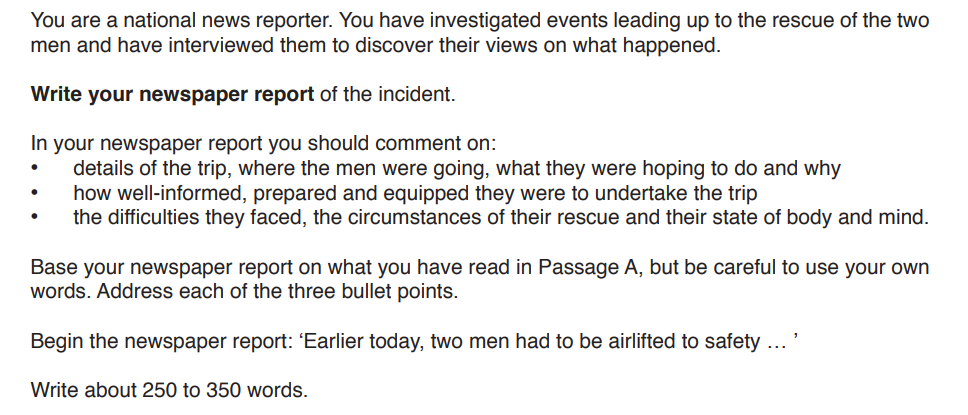|
Model answer:
A fun fishing trip for two old friends who had not seen each other since university took an unexpected turn recently at White Cap River. The pair had not been fishing together for years, and were clearly hoping for a big catch, as well as a real-life adventure at the setting of one of the men’s favourite childhood stories. Leaving their families and responsibilities in the city, the friends decided to catch up over a long drive in a soft-top sports car through open countryside and rolling hills in the hope of creating new memories together. The mountain road famously offers impressive views of the valley below, before descending back down into the National Forest. The employee of a local fishing-tackle shop recalls meeting the pair when they stopped to check their directions and how far it was to the river itself. He was surprised that they were undertaking the journey to the canyon without a four-wheel drive vehicle, but did not see anything else at that point to give him cause for concern.
Those familiar with the terrain would know it is unwise to attempt this particular descent without a suitable vehicle. There seemed to be a distinct lack of planning and preparation between the friends, who thought that - alongside a faded atlas that was probably out of date - just a rod and a reel was all that was going to be required. The passing of time meant that the friends did not seem to know each other as well as they thought, as it transpired that Royer, who was in charge of the wheel on the windy road that worms its way through forest land, has a phobia of heights. The narrow, crumbling road proved too much for him, and both men ended up spending that last of the daylight (and the last of their fuel) searching for a less dangerous route down to the river.
The following day, realising that he hadn’t seen the men’s car return, the fishing-tackle shop employee contacted the emergency services, fearing an accident. The gradient and the depth of the canyon means that, if stuck, it is impossible to get back up and get help. The mountain rescue team quickly assembled and, by the river, located the men, who had spent a cold and sleepless night in their car without blankets or food. Surprisingly to some observers, they were in the process of inflating a second-hand dinghy to try to attempt the foaming whitecaps of the river, which requires proper equipment and a decent boat even to try to fish in it. The men seemed undaunted by their ordeal and were ready to try again another day, but did accept that they would need to be better prepared next time.
|








